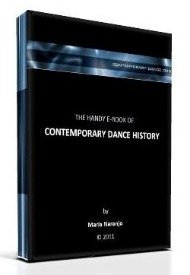Writing dance, dance notation systems?
by Camila
(Colombia)
i have been thinking lately about dance notation and its impact on, well, the works that are being written down.
When musicians write music they do so in order not only to archive their piece but to show it to other musicians and make it so that anyone could play it.
I guess thats how an orchestra builds its repertoire. Do you think dance notation can help to do this in the dance world?
here´s an example of what i am thinking: what if a dancer in new zealand wanted to make a dance work written in labanotation by a choreographer in russia, or lets think about the future:
what if a dancer from the 2550´s wanted to recreate a dance work written today, i guess they could use dance notation to do so.
BUT how are we doing it today? how have we recreated dance works from the past? do we do it? do we use labanotation or any dance notation? and if not, why dont we?
Comments for Writing dance, dance notation systems?
|
||
|
||
The handy e-book of CONTEMPORARY DANCE HISTORY:
The Dance Thinker is our occasional E-zine. Fill in the form below to receive it for free and join us.
Read:
"The Dance Thinker"
BACK ISSUES
Post contemporary dance announcements (workshops, auditions, performances, meetings and important news... it is free.)



